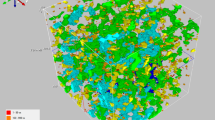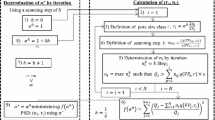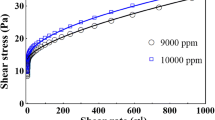In light of the fact that the results of conventional mercury intrusion porosimetry experiments may not always be accurate, unidirectional (linear) mercury intrusion porosimetry was employed to construct capillary pressure curves, determine the pore size distribution and pore structure of four low-permeability sandstones under different effective stress. Analysis results show that for the same sandstone sample, the capillary pressure curve obtained by unidirectional mercury intrusion porosimetry deviates from the curve obtained by conventional mercury intrusion porosimetry, and the deviation becomes more apparent with increasing effective stress; the inlet capillary pressure in the unidirectional mercury intrusion porosimetry experiment is higher than that in the conventional mercury intrusion porosimetry experiment; with the same mercury saturation, the capillary pressure in the unidirectional mercury intrusion porosimetry experiment is higher than that in the conventional mercury intrusion porosimehy experiment; the maximum mercury injection saturation in the unidirectional mercury intrusion porosimetry experiment is lower than that in the conventional mercury intrusion porosimehy experiment and decreases with increasing effective stress; the average mercury injection value in the unidirectional mercury intrusion porosimetry experiment is higher than that in the conventional mercury intrusion porosimetry experiment and increases with increasing effective stress; the sorting coefficient determined by unidirectional mercury intrusion porosimetry is slightly different from that found by conventional mercury intrusion porosimetry; finally, the skewness of the capillary pressure curve obtained by unidirectional mercury intrusion porosimetry is greater than that obtained by conventional mercury intrusion porosimetry. Therefore, unidirectional mercury intrusion porosimetry makes it possible to measure capillary pressure with a high level of accuracy.




Similar content being viewed by others
References
S. M. Hazanissadeh and W. G. Gray, Water. Resour. Res., 29, No. 19,3389–3405 (1993).
S. M. Hazanissadeh, M. A. Celia, and H. K. Dahle, Vadose Zone Journal, 1, No. 8, 38–57 (2002).
O. Oung, S. M. Hazanissadeh, and A. Bezuijen, J. Porous Media, 8, No. 3, 247–257 (2005).
He Gengsheng, Petrophysics, Science Press, Beijing (2010).
H. W. Brown, Petroleum Transaction AIME, 192, 67–74 (1951).
S. Majid, Modeling and Experiments of Drainage Relative Permeability and Capillary Pressure Functions Using a Centrifuge, University of Calgary, Calgary Alberta (2007).
Tao Zhengwu, Li Min, Tao Jian et al., Special Oil and Gas Reservoirs, 19, No. 5, 131–134 (2012).
O. B. Wilson, The Influence of Porous Plates on Effective Drainage and Imbibition Rates, Universitetet i stavanger, Stavanger (2004).
Luo Zhetan and Wang Yuncheng, Pore Structure of Oil-Gas Reservoir, Science Press, Beijing (1986).
Zhang Hao, Research on Petrophysical Properties and its Application in Tight Sandstone Reservoirs, Southwest Petroleum University, SiChuan ChengDu (2006).
Lin Min, Tao Zhengwu, Liu Quanwen et al., Rock and Soil Mechanics, 36, No. 5, 1352–1356 (2015).
Author information
Authors and Affiliations
Corresponding author
Additional information
Translated from Khimiya i Tekhnologiya Topliv i Masel, No. 4, pp. 53 – 56, July – August, 2018.
Rights and permissions
About this article
Cite this article
Hao-ran, L., Xu-ri, H., cheng, Y. et al. Study of Low-Permeability Sandstone by Unidirectional Mercury Intrusion Porosimetry. Chem Technol Fuels Oils 54, 476–483 (2018). https://doi.org/10.1007/s10553-018-0949-0
Published:
Issue Date:
DOI: https://doi.org/10.1007/s10553-018-0949-0




